Do you want to give your children a head start in their cognitive development? Homemade toys are an excellent way to do just that! From building blocks and puzzles to puppets and DIY sensory toys, these homemade toys have endless possibilities.
In this blog post we’ll explore the numerous advantages of making these types of educational tools, as well as provide tips on how best to make them safely. Get ready for some fun ideas too! So join us now as we dive into the world of homemade toys for early childhood development.
Key Takeaways on DIY Toys for Developing Cognitive Skills
- Homemade toys are a great way to give children a head start in their cognitive development.
- Puzzles, blocks and building sets, arts & crafts, musical instruments and sensory bins with different textures are some of the types of homemade toys you can make at home that encourage creativity and problem-solving skills.
- Letting kids join in on the fun encourages problem-solving, collaboration, resourcefulness while strengthening family bonds.
Types of Homemade Toys for Cognitive Skills Development
Here are the different types of DIY toys you can make at home:
Puzzles and Games
Guessing game and puzzles are fantastic toys for early learning and development. Not only do they help children learn problem-solving skills, but they also encourage creativity and critical thinking.
For example, a simple game of tic-tac-toe can be made out of paper or cardboard with markers or crayons to draw the board. Another option is to make a jigsaw puzzle from old magazines or newspapers that your child can assemble while learning about different topics.

Blocks and Building Sets
Blocks are an excellent way to promote creative play in children while helping them develop their motor skills as well as spatial awareness. You can easily make blocks at home using wood scraps, paint, glue, and other materials you have lying around the house such as bottle caps or buttons. You could even use recycled items like stick, egg cartons or toilet paper rolls! With these blocks, your child will be able to build towers, castles, bridges – whatever their imagination desires!
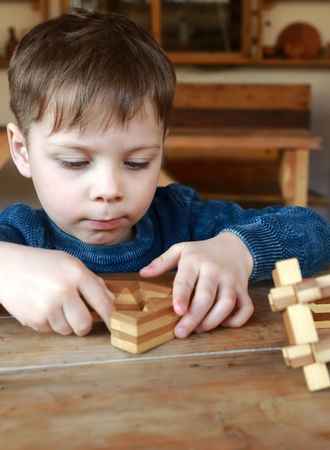
Arts & Crafts
Art supplies and crafts are a great way to encourage creativity and imagination in kids. Encouraging them to explore new ideas through drawing or painting projects can help them develop their creative skills.
Finger paints made from natural ingredients like cornstarch mixed with food coloring, DIY clay sculptures crafted from flour, and construction paper collages are just some of the possibilities for art projects that children can create. There is no limit on what your little one can make when it comes to art supplies!

Tips for Making Homemade Toys for Cognitive Skills Development
Making homemade toys is a great way to provide your children with educational and fun activities that can help them develop cognitively. It’s also an eco-friendly and cost-effective alternative to buying plastic toys from the store. Here are some tips for parents on making DIY toys:
Gather your materials
Before you start crafting, make sure you have all the materials you need on hand. This will save time and frustration in the long run! You can use items such as cardboard boxes, paper towel rolls, fabric scraps, yarn or string, buttons, beads, pipe cleaners – anything that sparks your creativity.
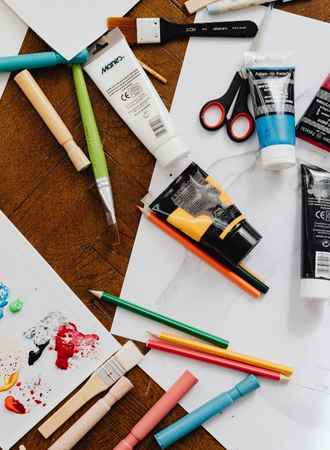
Use recycled or everyday objects and items
Instead of throwing away old clothes or plastic containers, get creative by turning them into something new! For example, turn an old shirt into a stuffed animal or create a puppet theater out of empty cereal boxes. Not only will this give your kids hours of entertainment but it’ll also teach them about upcycling and sustainability.
Add natural elements
Incorporate natural elements like leaves and twigs into your creations whenever possible. This not only adds texture but it encourages outdoor exploration too! For instance, create a nature scavenger hunt where kids have to find certain items in their backyard or park – this helps build observation skills while having fun at the same time.
Avoid sharp edges and small parts
When crafting any type of toy, make sure all edges are rounded off or sanded down so they don’t pose a risk of cutting or scratching your child. Additionally, avoid using small parts that could easily become choking hazards if swallowed.
Use non-toxic materials
Make sure the materials you use for your homemade toys are non toxic and free from harmful chemicals like lead paint or formaldehyde glue. You can also look into natural materials such as wood, cotton fabric, beeswax crayons, and other organic items which will help keep your child safe during playtime.
Let your kids join in on the fun
Kids love to get their hands dirty. Involving them in the creation of DIY toys at home fosters a sense of accomplishment and nurtures their creativity. By participating in the process, kids learn valuable skills such as problem-solving, collaboration, and resourcefulness as they transform everyday household items into imaginative playthings.
Additionally, the shared experience of making DIY toys strengthens family bonds while promoting sustainable and cost-effective practices for entertainment.
Supervise children during playtime
Even though you may have taken all the necessary precautions when creating the toy, it’s still important to supervise children during playtime just in case something unexpected happens. This will help prevent any accidents from occurring while allowing you to enjoy quality time with your little one.
Fun Ideas for Homemade Toys for Cognitive Skills Development
Here are fun ideas for homemade toys that will keep your little one engaged and learning:
Musical Instruments
Music can be a powerful tool for developing creativity and problem-solving skills in children. Making homemade musical instruments is an easy way to introduce music into the home without breaking the bank.
Try making simple drums out of empty oatmeal containers or shakers with dried beans inside old plastic bottles! You can also use everyday items like spoons, pots, pans, wooden blocks, or even cardboard tubes as makeshift percussion instruments.
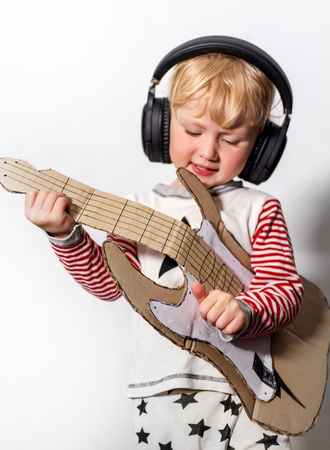
Sensory Bins
Sensory bins are great for stimulating all five senses while encouraging creative exploration and problem solving in young children. To make a sensory bin at home you’ll need some kind of container (like an old shoe box), fillers such as sand or rice, small objects like buttons or beads, scoops and measuring cups for scooping and pouring activities, plus any other materials you think would be fun!
Pretend Play Sets
Pretend play helps kids explore different roles they may take on later in life while building language skills through storytelling and dialogue with others. To make pretend play sets for toddlers try using recycled materials like egg cartons turned into farm animals or paper towel rolls transformed into telescopes! You can also create miniature versions of real-life objects by cutting up cardboard boxes to build houses or cars – the possibilities are endless!
Sensory Bottles
Fill clear plastic bottles with materials like glitter, beads, and water to create a sensory experience that can help with visual tracking, concentration, and emotional regulation.
Montessori-Style Shape Sorter
Cut out shapes from cardboard and let your child match them to corresponding holes in a cardboard box. This can help with spatial awareness, and problem-solving skills.
Memory Game
Make your own memory game by cutting out pairs of identical images from magazines or printing them out. This can help with visual memory, attention, and concentration.
Busy Board
Create a board with different shapes, textures and objects and watch your child manipulate and explore the stuff on the board. This can help with fine motor skills and sensory development.
Homemade Puzzles
Draw a picture or print out an image and cut it into puzzle pieces. In addition to being a fun and engaging activity, homemade puzzles can also aid in cognitive development by promoting problem-solving skills, hand-eye coordination, and spatial awareness
Peg Board
A DIY toy that can be made out of golf tees is a pegboard. By pushing the tees into a foam block, a child can use the pegboard to practice fine motor skills by placing small objects onto the tees. Additionally, the colorful tees can make for a visually stimulating and fun toy.
Scarf Pull Toy
To make a scarf pull toy for kids at home, you will need a long and narrow scarf, two wooden beads, and a wooden dowel. Tie one bead to each end of the scarf and slide them towards the center. Thread the dowel through the bead loops and tie a knot on each end to secure it. Your child can now hold onto the dowel and pull the scarf back and forth for a fun and colorful toy!
FAQs on Great Ideas for DIY Toys
What Sensory Toys Can I Make at Home?
There are many great ways to make sensory toys at home with minimal waste. One of the easiest and most cost-effective is to upcycle items you already have around the house, such as cardboard boxes, fabric scraps, or old containers. You can also use natural materials like pinecones, rocks, shells, and sticks for tactile play.
For a more creative approach, try making homemade instruments out of recycled materials like empty cans or plastic bottles filled with rice or beans. It’s also a good idea to consult a licensed occupational therapist for additional ideas, especially if you want to focus on our child’s special needs.
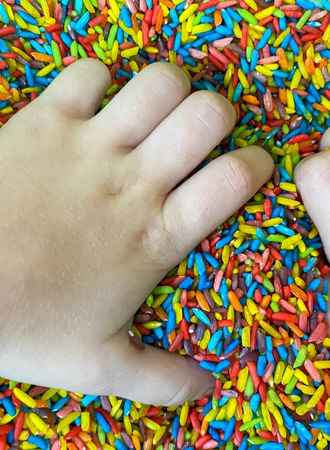
What Toys Are Best for Brain Development?
Wooden toys are a great choice for brain development as they encourage creative and open-ended play. They help children to develop problem solving skills and fine motor skills. Wooden toys also last longer than plastic ones, making them an eco-friendly option for families looking to reduce their waste output.
Wooden toys often come with fewer parts or pieces that can be lost easily compared to plastic ones. This makes them ideal for younger children who may not yet have the dexterity needed to keep track of small items.
How Do Toys Help Children’s Cognitive Development?
Toys are essential for children’s cognitive development as they help to stimulate their imagination, creativity and problem-solving skills. Through play, children learn about the world around them and develop important social skills such as cooperation and communication.
Wooden toys in particular can provide an open-ended experience that encourages exploration and experimentation while helping to foster a sense of responsibility towards the environment.
What Baby Toys Can You Make at Home?
Sensory toys are toys designed to engage children’s senses and promote sensory development. These toys can be used to stimulate various senses such as touch, sight, sound, smell, and taste, are often made with different colors, textures, shapes, and materials and in some cases make engaging soft sounds.
Sensory toys can be particularly beneficial for children with sensory processing disorders or developmental delays, as they can help improve their sensory awareness, motor skills, and overall cognitive development.
Sensory Bottles
Fill clean and dry plastic bottles with colorful items like beads, sequins, buttons, or small toys. Securely close the bottles and let the baby play with them. The colorful and sensory experience will help with their development.
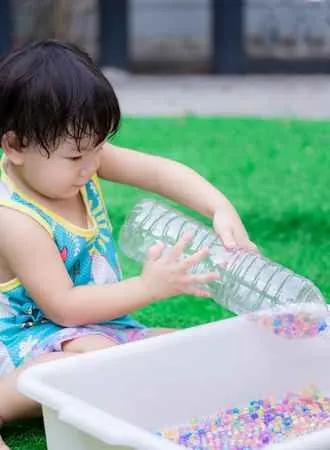
Fabric Ball
Sew or tie together pieces of colorful and textured fabric to make soft balls. Babies can grab, toss, and chew on them, helping them develop their hand-eye coordination ability.
Soft Blocks
Use colorful and textured fabric to make soft blocks. You can fill them with stuffing or beans, so they’re squishy and easy to hold. These will help babies improve their motor skills.
DIY Stacking Rings
Use different sized cardboard tubes or paper towel rolls to make stacking rings. Paint them in light colors and let babies stack them on top of each other, helping them with their problem-solving skills.
Sensory Bags
Put various textures like rice, pasta, cotton balls, or even hair gel, and add some small toys in sealable plastic bags. Tape the bags shut, and let babies play with them, squishing and manipulating the contents, helping them with their fine motor skills and sensory development.





